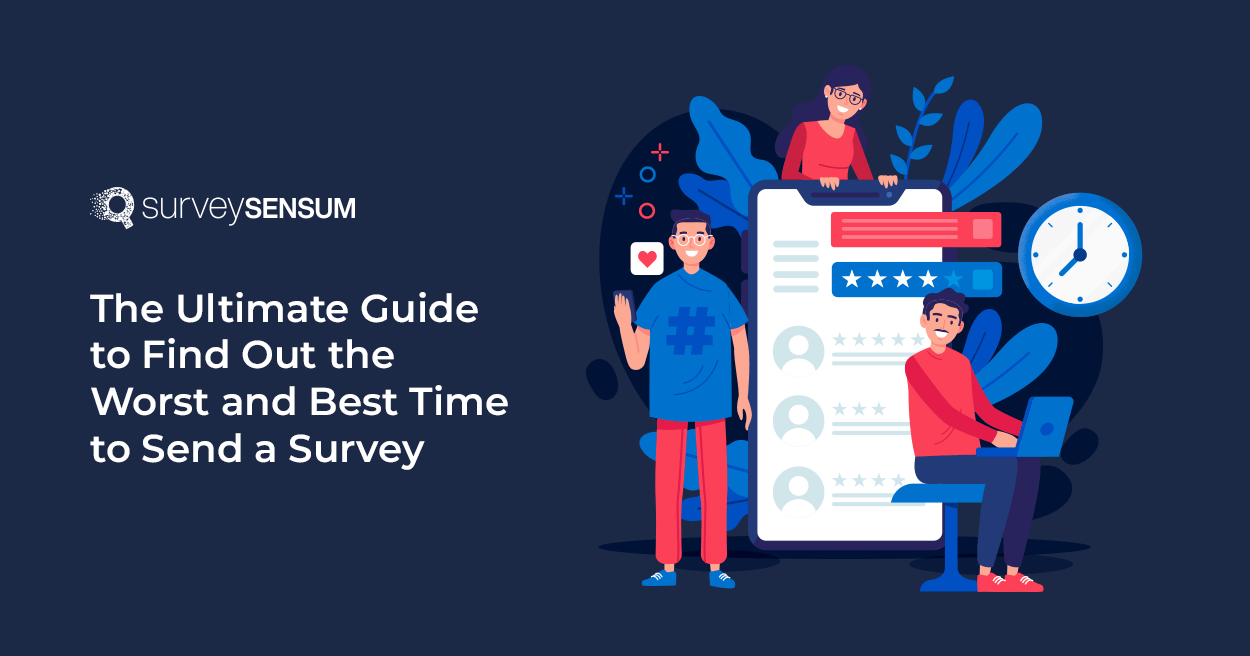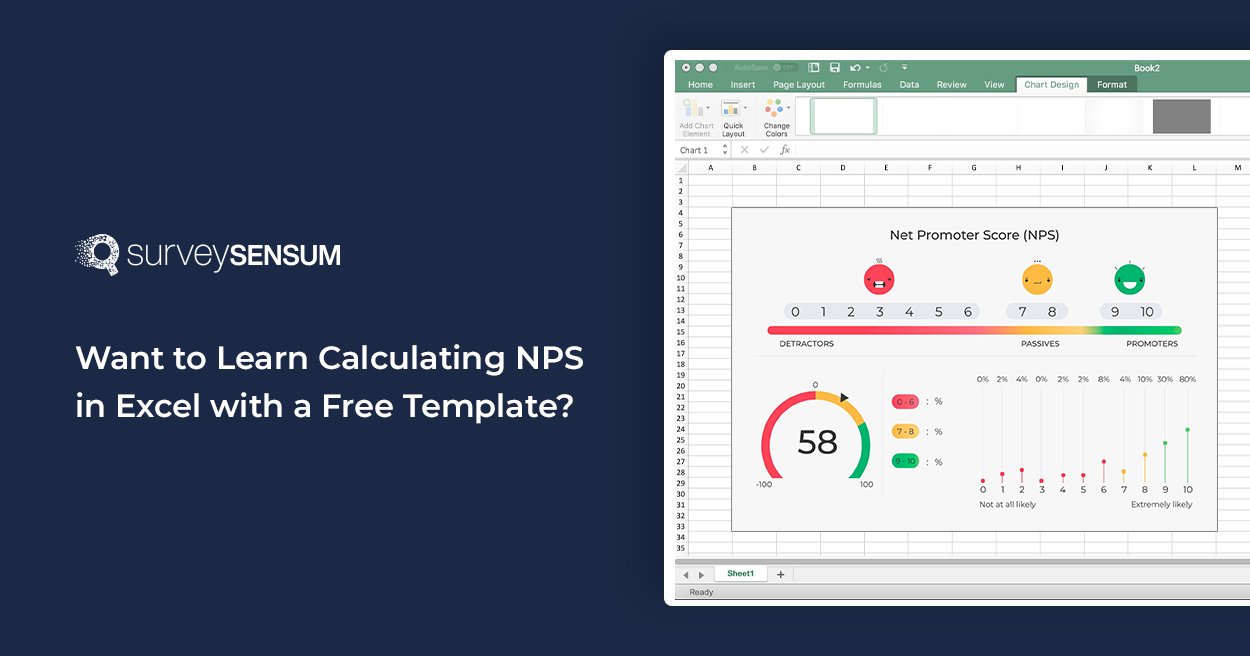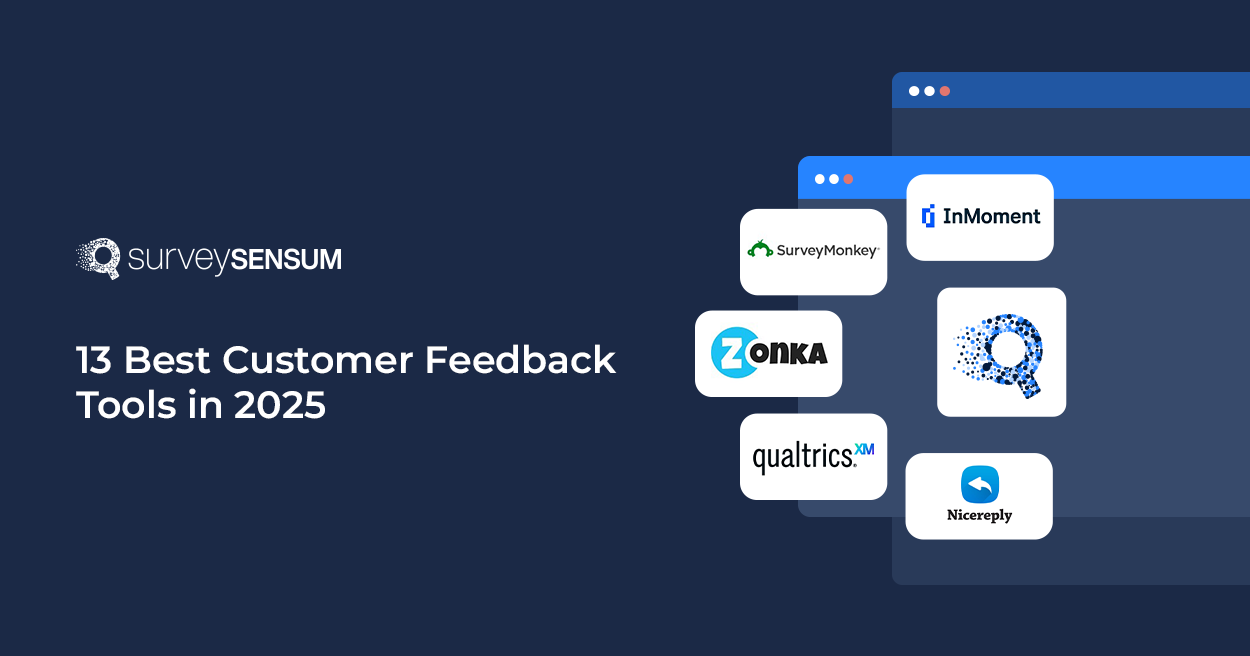
Post-Event Surveys On a Sunday evening, I was relaxing on my couch, binge-watching my favorite series after a busy weekend. Suddenly, my phone buzzed with a notification—an email from a clothing brand I had recently purchased from. They were asking for feedback on their products. I sighed and closed the notification. After all, on a lazy Sunday, the last thing I wanted to do was complete a survey.
Like many others, this company was passionate about improving its services and relied on customer feedback. Yet, they didn’t get the desired responses.
The issue — they were sending surveys at the WRONG time.
Well, understanding the ideal survey timing to get the maximum response rate can be challenging. But don’t worry; this blog will provide you with the worst and best times to send a survey so that you can evaluate your strategies and gather authentic customer feedback.
Let’s get started.
1. Best Days to Ask for Feedback
2. Best Times During the Day to Send a Survey
3. Event-Specific Surveys
Don’t Forget to Segment Your Audience
Worst Times to Send a Survey – CX Expert Stories
15 Tips for Optimizing Survey Timing
Mistakes to Avoid While Sending a Survey
Conclusion
Best Times to Send a Survey in 2024
1. Best Days to Ask for Feedback
Did you know that Tuesdays are often the most productive days? That’s when people are usually more focused and ready to engage. So, if a company sends a survey on a Tuesday, the response rate will be high.
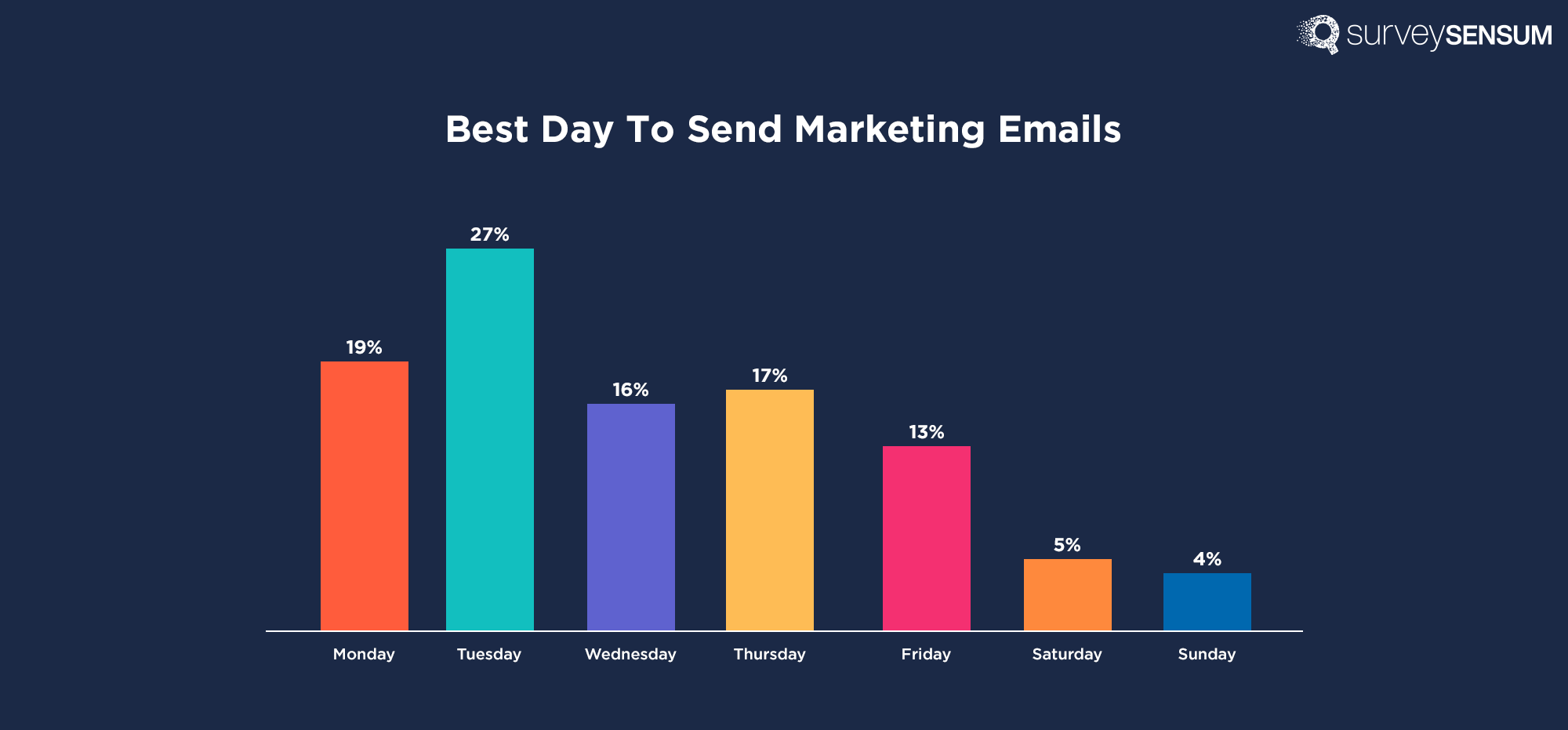
Source – Hubspot
2. Best Times During the Day to Send a Survey
Aim for mid-morning or afternoon, roughly between 9 AM and 12 PM, when people are focused and open to short tasks.
Don’t forget to consider the best time to send a survey email and avoid bombarding them with surveys on the weekends because not everyone feels like answering surveys on the weekends when they relax and don’t want to think about work stuff. You need to define the fair time to solve the survey effectively. In this regard, the hours calculator can assist in calculating the time required to do the survey thoroughly.
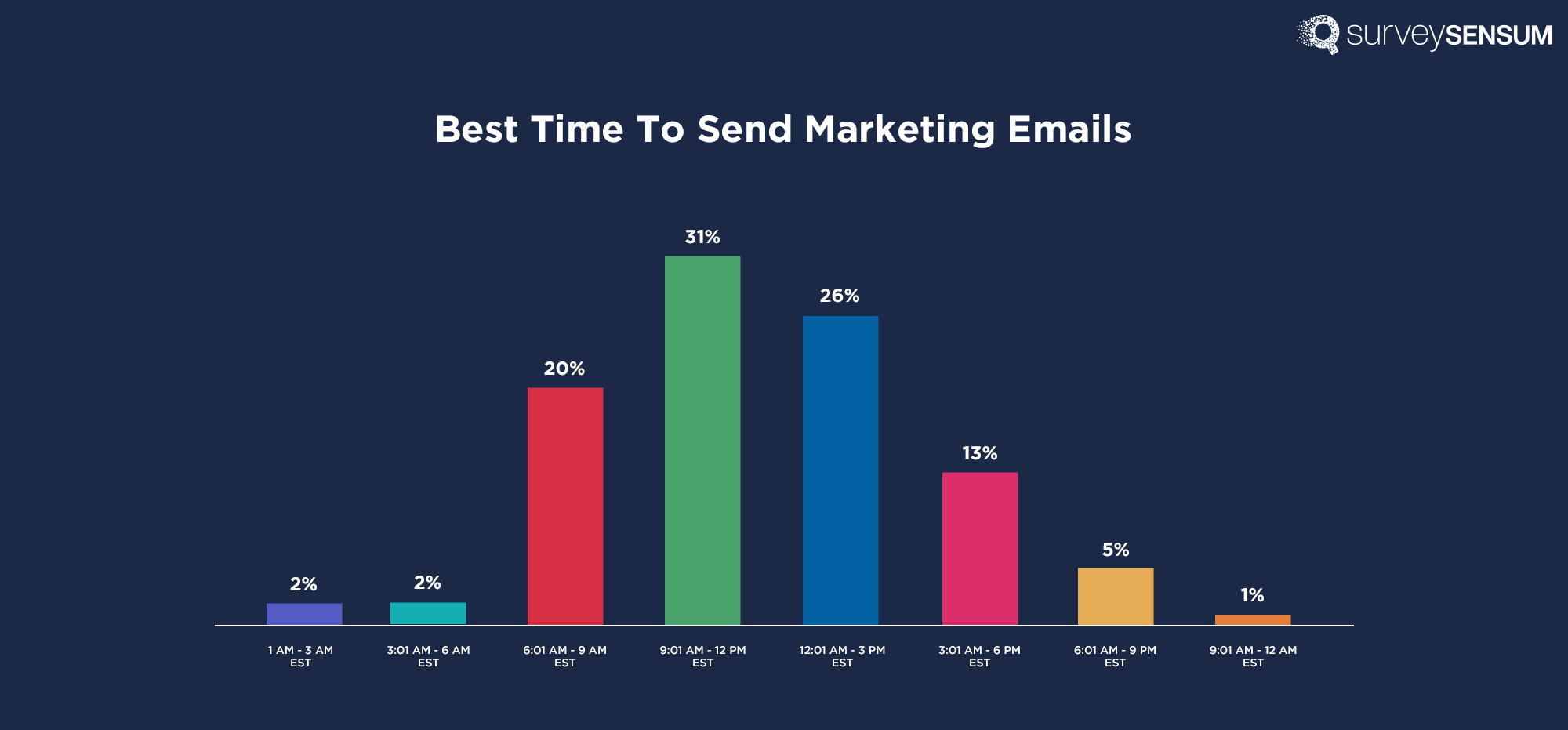
Source – Hubspot
Be strategic about the type of survey, too. For instance, when someone buys your product, hold off on sending NPS surveys immediately after the interaction; let the experience sink in and send an NPS survey after they have experienced your product.
By picking the right moments, you increase response rates and show respect for your audience’s time and preferences. It’s about creating a considerate survey experience that values their input.
So, start scheduling customer surveys at the right time with SurveySensum.
3. Event-Specific Surveys
Event-Specific Surveys play a crucial role in capturing targeted feedback after specific occurrences. Here are three types of such surveys:
- Webinar Surveys: These surveys are sent after webinars to understand the effectiveness of the webinar, identify areas of improvement, and cater to the audience’s preferences.
- Post-Event Surveys: These surveys are sent following any significant event, gathering feedback on the entire event experience. It helps assess overall satisfaction, event organization, and participant impact.
- Offer Redemption Surveys: These surveys are triggered after customers redeem a specific offer or promotion. It helps understand the offer’s effectiveness, customer satisfaction, and factors influencing redemption.
Don’t Forget to Segment Your Audience
Understanding your audience’s demographics—age, gender, location, and profession—allows you to time surveys according to their typical schedules and preferences. Analyzing how your audience behaves regarding engagement, purchase patterns, or interaction with your brand helps you identify optimal times to send surveys.
For instance, if your demographic is predominantly working professionals, timing surveys around their office hours might yield better response rates.
It ensures that you respect their schedules and preferences, increasing the chances of meaningful engagement.
Now you know the best day and time to send a survey, let’s hear it from the industry experts.
Worst Times to Send a Survey – CX Expert Stories
In the fast-paced world of customer experience, capturing feedback is essential for businesses striving to enhance their services. However, experts agree that timing is crucial when seeking customer feedback. Have a look at the insights from CX professionals and their experiences with poorly timed surveys at CXQOTD.
Introducing CXQOFTD
The Customer Experience Quote of the Day (#CXQOTD) has emerged as a platform where CX experts share their valuable thoughts and experiences.
While talking about the right time to send the survey, Jeremy, a seasoned CX professional, articulates a critical concern: “If you survey a customer asking them how you did before you completed what you were supposed to do before their problem got solved, then they’re not going to be happy ever, so don’t survey them then. Instead, focus on getting their issue solved and then, at the end of all that, find out how you did.”
Let’s explore further insights from renowned CX experts on the worst times to send surveys:
Roy Atkinson – Timing Matters
Roy – “Worst times to survey customers: Too early (before the completion of a transaction) and too late (after the experience fades or the damage is done). And for goodness sake, don’t hit me with the website survey the instant I land on your page.”
Mary Drumond addresses the importance of NPS Surveys Timing
Mary – “I don’t think bad timing is the biggest problem. Bad surveys are a much more serious issue, destroying VoC. But, timing-wise, the worst time to send one, in my opinion, is before the customer has had the chance to use the product.”
Tanuj Diwan, Co-Founder at SurveySensum Identifies Three Timing Blunders
Tanuj – “Sending an NPS right after product sales, dispatching surveys without completely resolving the customer’s issue, and sending exhaustive yearly surveys about the customer’s journey.”
Jenny Dempsey humorously recounts an unfortunate incident related to Premature Survey Emails.
Jenny – “I know a company that sent the survey review emails before the product was delivered. OOPS! #CXQOTD”
Sudha Bhat, CCXP, recalls a funny incident related to the Premature Restaurant Survey at a restaurant.
Sudha – “Had a funny instance once we were asked to fill a survey at a restaurant even before we ordered, and we were like, ‘Can we order first, eat, and then let you know.'”
Schulbert Koleka – emphasizes the pointlessness of surveys received after the service, causing Survey Fatigue.
Schulbert – “Most of the surveys I get are pointless and a sign of survey fatigue. I ignore them. Those I value most are the ones I am asked face to face when settling bills or checking out.”
Michael Brandt, CCXP shares a humorous moment experience related to Customer Support.
Michael – “Getting a survey asking about the customer support line just as I’m unpacking my new drone! I wasn’t sure that was a good omen… #CXQOTD”
Aileen Day, CCXP – Aileen recounts an untimely Early Referral Request
Aileen – “I paid for a digital contract program, and before even signing into the program, I received an email asking if I’d refer their platform to a friend for a discount. 1. I’ve already paid for it. 2. Let me sign in and use it a few times, let alone once, and then ask me #CXQOTD.”
In conclusion, the timing of customer surveys is a pivotal factor in the quest to gather valuable feedback. As CX professionals navigate the challenges of seeking feedback, these expert stories shed light on the worst times to approach customers for their opinions.
→ Understanding the customer journey and respecting their experience emerge as key elements in optimizing the timing of surveys.
Start sending surveys at the right time with SurveySensum.
So, those were some insightful experiences shared by the industry experts. Now, let’s learn some tips for optimizing the survey timing.
15 Tips for Optimizing Survey Timing
When it comes to conducting surveys, timing is everything. To ensure you gather valuable insights from your audience, consider the following tips for optimizing survey timing:
- Account for Geographical Diversity: Consider time zones for a geographically diverse audience to avoid inconvenient survey times.
- Cultural Holidays and Events: Be aware of cultural holidays and events that may affect the availability and responsiveness of your audience.
- Pre-Announce Survey: Build anticipation by pre-announcing the survey and giving participants a heads-up about its arrival.
- Conciseness is Key: Keep surveys concise and engaging to respect respondents’ time. Lengthy surveys often result in higher dropout rates.
- Incentives for Participation: Offer appropriate incentives to encourage participation and show appreciation for respondents’ time.
- Optimal Timing: Send your survey at the optimal time—usually mid-week and mid-day—when respondents are more likely to engage.
- Brevity Matters: Keep the survey short and to the point. A straightforward approach minimizes the risk of respondent fatigue.
- Subject Line Hook: Grab attention with an enticing subject line to increase the likelihood of recipients opening and completing the survey.
- Clear and Unambiguous Questions: Ensure questions are clear, concise, and unambiguous to avoid confusion and gather accurate responses.
- Relevance to Audience: Make sure the survey content is relevant to the audience. Irrelevant surveys are often ignored.
- Mobile-Friendly Design: Ensure the survey is mobile-friendly, considering many users access smartphone surveys.
- Personalization Adds Value: Personalize the survey invitation and questions where possible to make respondents feel valued and more likely to engage.
- Reminder Emails: Send reminder emails to those who still need to complete the survey after a few days to boost response rates.
- Easy Access: Make the survey accessible without unnecessary logins or complicated steps, ensuring a seamless respondent experience.
- Privacy Assurance: Assure respondents that their data is confidential and will be used responsibly, fostering trust.
So, with these 15 tips, you can easily optimize your survey timings. Now, let’s understand what mistakes you should avoid while sending the surveys.
Mistakes to Avoid While Sending a Survey
- Overly Long Surveys: Lengthy surveys can lead to respondent fatigue and drop-offs. Keep surveys concise.
- Leading or Biased Questions: Ensure questions are neutral and unbiased to avoid skewing results.
- Inadequate Testing: Thoroughly test your survey before deployment to identify and address potential issues.
- Failing to Follow Up: Send respectful reminder emails to non-respondents to avoid missed responses.
- Ignoring Data Analysis: Have a clear strategy for data analysis to make the most of the gathered information and improve future surveys.
So, avoid these common mistakes while sending a survey in order to increase the response rate.
Conclusion
Understanding the right moments to request customer feedback through surveys is vital for businesses looking to improve their response rate. The insights covered in the blog provided by seasoned CX professionals underscored the significance of timing, showcasing real-world examples and offering cautionary tales about poorly timed surveys. Their anecdotes highlighted the importance of completing transactions, product usage, and respecting customers’ ongoing experiences before seeking feedback.
By following the best practices and avoiding common survey pitfalls, businesses can elevate their feedback collection strategies, fostering genuine customer engagement and improving service offerings.
To send a survey at the right time to gauge customer satisfaction, consider using a robust customer feedback tool like SurveySensum. This powerful platform goes beyond feedback collection. With advanced features like survey throttling, Text Analytics, customizable dashboards, and many others – it analyzes and extracts actionable insights from customer feedback.
And not just that! With end-to-end support from CX experts, you can ensure that your CX program succeeds and achieves the goal you are aiming for!






